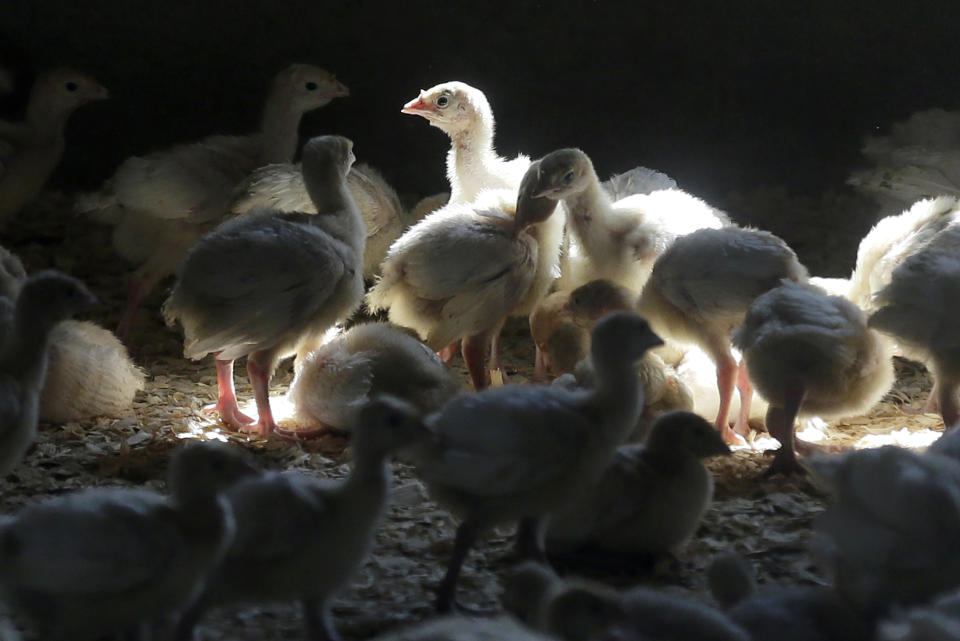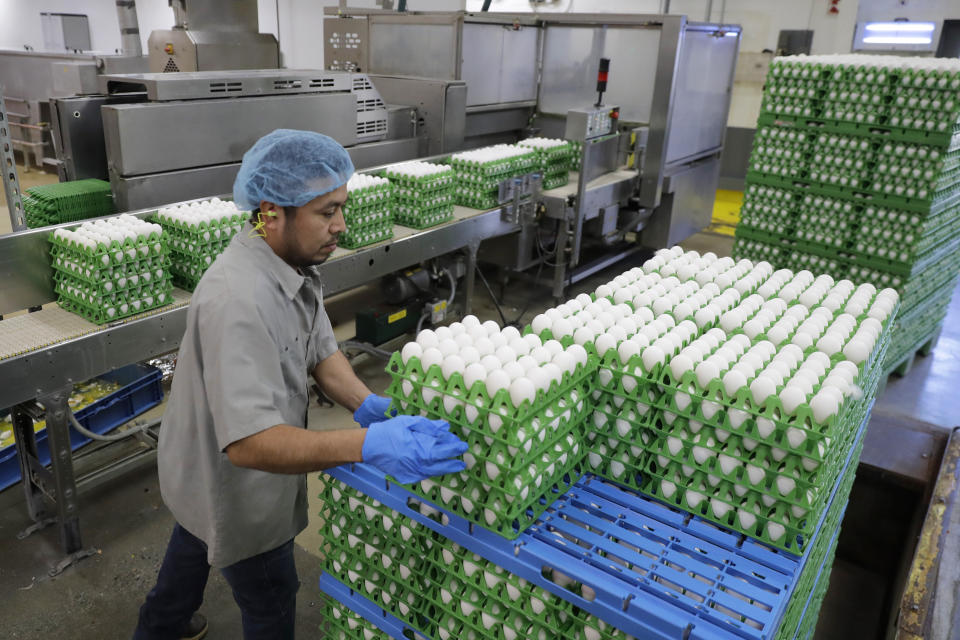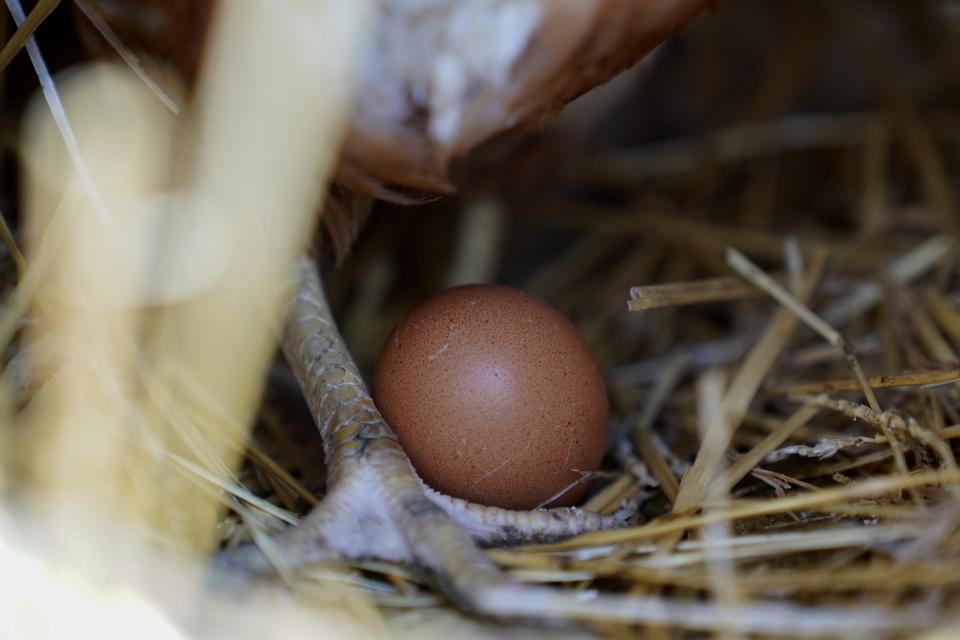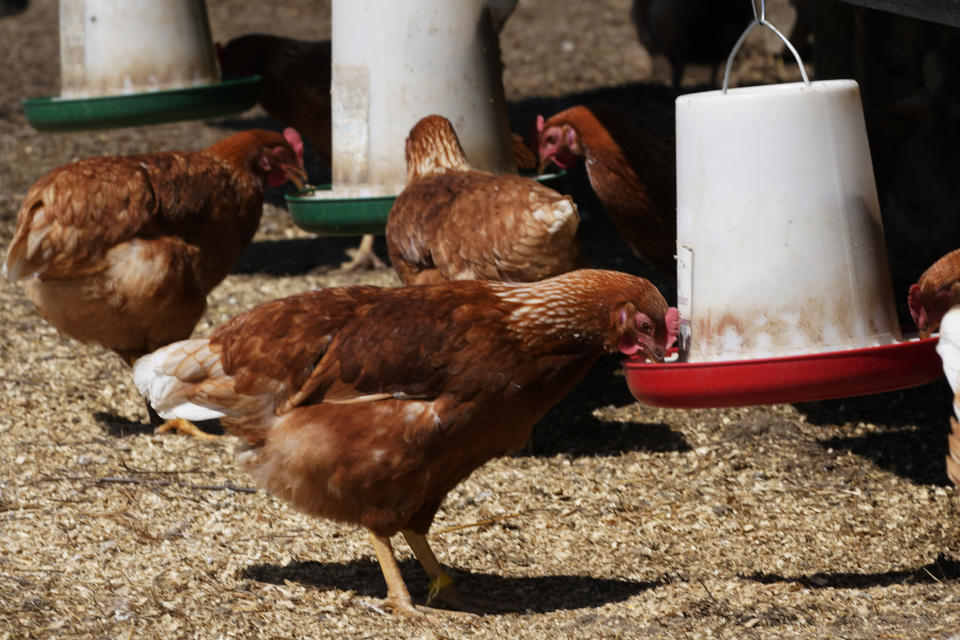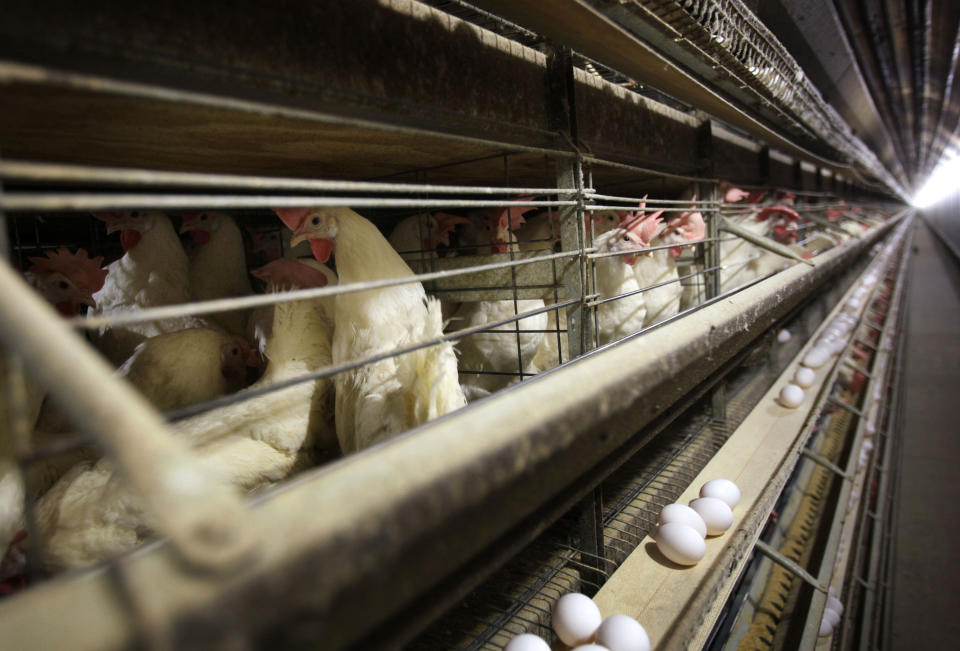The Bird flu outbreak isn't over, but it's less severe, helping egg and poultry prices recover
OMAHA, Neb. (AP) — Nearly 5 million chickens, turkeys and other birds have been slaughtered this year because of a persistent bird flu outbreak that began in 2022, but as big as that number may sound, it’s far less than the number of birds killed last year which means consumers aren't seeing as much impact on poultry and egg prices.
The 4.6 million birds killed this year compares to the nearly 58 million birds the U.S. Department of Agriculture said were slaughtered last year in the first year of the outbreak. While that decline is welcome news, the fact that infections continue is a worrisome indication that unlike earlier outbreaks, the current virus has found a way to survive through the summers, and poultry will likely always be at risk of the disease.
The key problem with bird flu is that the highly contagious virus is spread easily by wild birds through droppings and nasal discharges, and it mutates over time. Despite the best efforts of farmers, it is hard to keep the virus out.
“The industry is definitely on really high alert,” said veterinarian Denise Heard with the U.S. Poultry & Egg Association trade group.
As geese and ducks have started to head south for the winter, cases of bird flu have predictably begun popping up primarily at farms in Minnesota, Iowa and South Dakota along one of the major flyways for migrating birds. Most of those cases involve only tens of thousands of birds, but 1.2 million birds at one Iowa egg farm and another 940,000 chickens at one Minnesota egg farm had to be slaughtered last week after the disease was found.
Still, only a small portion of the total flock nationwide has been affected this year, allowing prices to fall closer to where they were before the outbreak began.
Egg prices peaked at a nationwide average of $4.82 per dozen in January — more than double the $1.93 per dozen charged a year earlier before the first bird flu case was confirmed in Indiana in February of 2022. They remained at $2.07 per dozen last month, according to new numbers released Tuesday.
Turkey and chicken prices also spiked over the past two years, but bird flu wasn't the only factor as feed, fuel and labor costs also soared as part of the widespread inflation that weighed on the entire economy.
The average price per pound of a whole chicken has climbed pretty steadily since it was at $1.62 in January 2022, according to the U.S. Bureau of Labor Statistics latest consumer price data. But it was only at $1.93 per pound in October, up from $1.86 a year ago. Chickens raised for meat haven't been hit as hard by bird flu because that industry is focused in the southeast where there haven't been as many cases, and because those chickens don't live as long before they're killed for meat so there's less chance of infection.
Retail turkey prices aren't tracked the same way, but USDA reports show that wholesale frozen turkey prices averaged $1.15 per pound in October, down from last year's $1.79 per pound and the previous year's $1.35 per pound. And many of this year's turkeys are already in cold storage, so even if more turkey farms get hit by the virus the current holiday supply won't be affected.
Plus, as the National Turkey Federation trade group points out, many retailers like to discount turkey prices heavily in the hopes that consumers will buy the rest of their Thanksgiving fixings at their stores, so consumers might find even lower prices.
“We’re in a really good spot for Thanksgiving turkeys,” said Jada Thompson, an agricultural economist at the University of Arkansas. “I think there should be a lot of relief coming in the holiday season.”
A combination of factors contributed to the sharp drop in bird flu cases this year. Perhaps the most important is that the number of virus cases the USDA has been finding among wild birds has dropped precipitously, suggesting that some ducks and geese may be developing immunity. But farmers also redoubled efforts to keep the virus from infecting their flocks by tightening up biosecurity practices.
Farmers have gone to great lengths by requiring workers to shower and change clothes before entering barns, sanitizing trucks that enter a farm and investing in separate sets of tools for every barn. Some farms have even upgraded barn ventilation and installed laser systems to discourage wild birds from congregating.
“The biggest thing, of course, that we would stress from here is biosecurity, biosecurity, biosecurity,” Heard said.
The USDA says the response to the outbreak has cost the government $757 million so far with most of that going to compensate farmers who have to destroy their flocks. Agriculture economists estimate that the industry has also suffered at least another $1 billion in damages from lost sales and other costs though the total cost to the industry hasn't been tallied up.
This outbreak is more widespread than the last big one in 2015 that killed about 50 million chickens and turkeys in 15 states, but it remains less costly as the industry and government apply the lessons learned from that experience.
Officials say bird flu doesn’t represent a significant health threat. Human cases are extremely rare and none of the infected birds are allowed into the nation’s food supply. Properly cooking poultry and eggs to 165 degrees Fahrenheit (73.89 degrees Celsius) will also kill any viruses.
Bird flu vaccines are being developed and might help in the future, but at this point they remain impractical. Export markets might not accept vaccinated birds, every bird would have to get shots individually and costly testing would be needed.
“It’s not economically feasible right now. And not just from the trade aspects, but just for the whole administration of it to the surveillance of it and the cost of all of that,” said John Clifford, who advises the USA Poultry and Egg Export Council on trade issues as the former chief veterinary officer for the United States.

